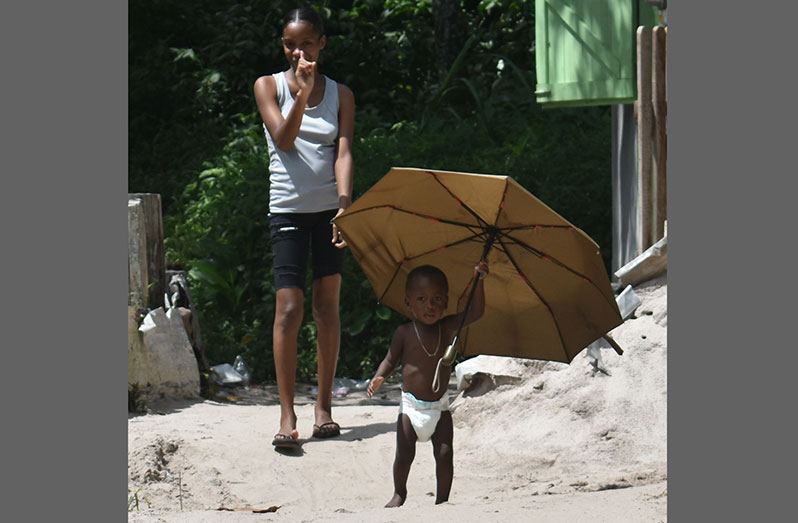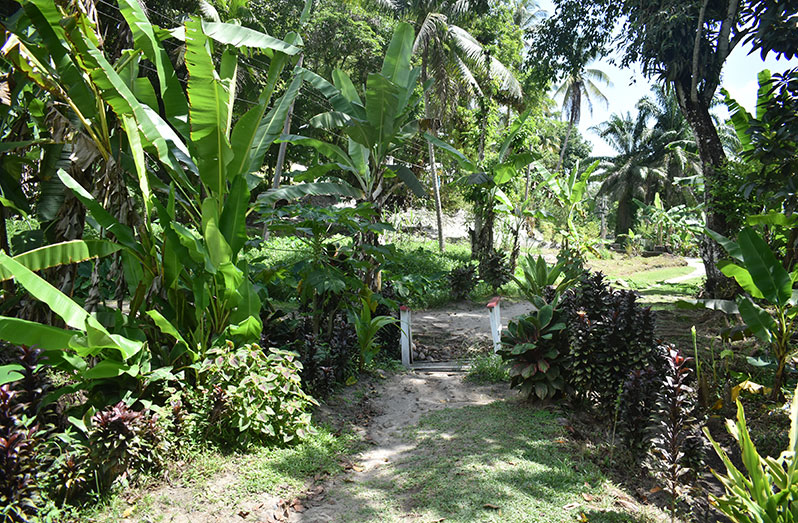This week the Pepperpot Magazine visited Region 10 (Upper Demerara-Upper Berbice) Victory Valley, Wismar, Linden, to highlight the way of life of the locals.
It is one of the most scenic places and it is an oasis for the people who eke out a living there, doing many things utilising their skills and establishing small businesses in Victory Valley.
Victory Valley lies between Blueberry Hill and Silvertown and can be accessed via Burnham Drive onto Silver Town Mosque Street, but vehicles can access only up to a certain point in the village.
After that, one has to make one’s way into the foothills and hills on foot and this village is set deep into the hills. It is a green community where almost every resident lives off the earth by growing their own food and using the crystal clear water from the natural springs that flow all the time.

In giving a bit of history about the village, Dawn Lambert told the Pepperpot Magazine that Victory Valley reportedly existed since the 1950s and was first referred to as the ‘Valley of Tears’ because of the swampy conditions and because it was surrounded by hills from where natural springs ran down into the village.
Lambert stated that because of the water which is always flowing throughout the village, it (the village) was said to be crying.
However, the people living there were asked to move because the area constantly eroded. Some of them did so, settling in Block 22, while several others fought to stay.
Lambert explained that the late President Linden Forbes Sampson Burnham, who was also a lawyer, represented those who chose to stay. He won them the right to stay in the village and they changed the name of the village to Victory Valley, to honour the victory.

Residents disclosed that a lot of people passed through Victory Valley because from there, they can access other villages, including Blueberry Hill, Wismar Housing Scheme, Silver Town, One Mile and other villages.
In Victory Valley, some houses are set on hills high above, while others are on slopes and some on lower ground.
The soil condition is sandy and most residents are farmers, utilising the land space to plant fruits, vegetables, flowers, and plants.
Victory Valley is set among the hills on the Wismar shore and it is home to about 400 residents.
For the most part, there are no roads in this village, only the main access entrance, an all-weather road which goes to a certain point and after that there are makeshift wooden bridges and a lot of trails leading to houses, farms and other parts of the village, that is, quite elevated and it is indeed a picture-perfect place.
According to Chairman of the Victory Valley Community Development Council (CDC), Anthony Roberts, the village started with a few families including the Millings, the first African settlers who were among the squatters, the Griffiths, some Amerindians, some Indians, one of whom had a shop, the Fordyces, the Alphonsos and the Montooths.
People started squatting in Victory Valley because at that time, you used to come and get work at GUYBAU and it used to have islanders there too and a lot of people from all over the country.
Roberts disclosed that Victory Valley has 17 different hill feet and other ways to get in and out of the village and it has a creek measuring 1,170 feet, known as the Wakanabo Creek.
He added that years ago they dug and found Dutch bottles among other things, which suggested that the Dutch used to mine in the creek.
Victory Valley is surrounded by hills and is between Blueberry Hill and One Mile/Half Mile. You can get into the valley from the top of the hills.
“Valley of Tears, the people won the right to stay there, they won the case and it was renamed Victory Valley,” he said.
Roberts told the Pepperpot Magazine that the CDC was established to foster development in Victory Valley and so far, they have had some enhancement to the community.
He added that a road was built a few years ago and recently drains were dug and lately they have been engaged with the Minister of Agriculture.
Roberts noted that some small projects are to be realised for the benefit of farmers in the village.
He disclosed that four small bridges will be built, revetments are to be installed to curb the erosion, a mini basketball court to be constructed and some more street lights will be installed.
“We have a garbage-disposal problem and I am calling on the authorities to assist us with some bins to be placed in the valley for the proper disposal of refuse,” he said.




.png)


















